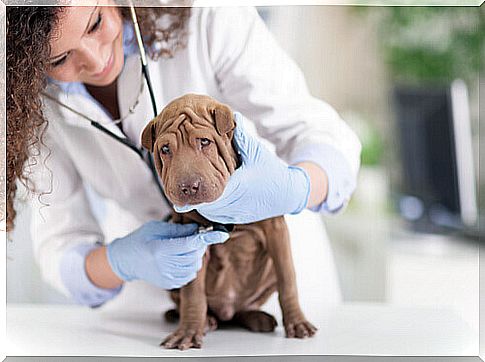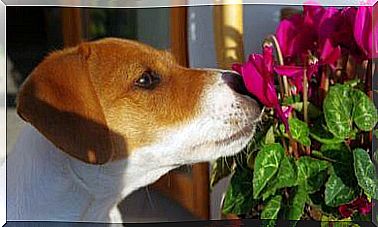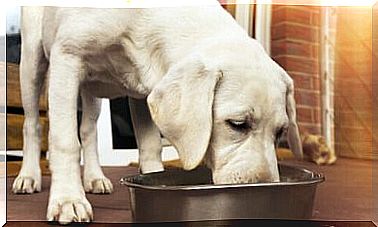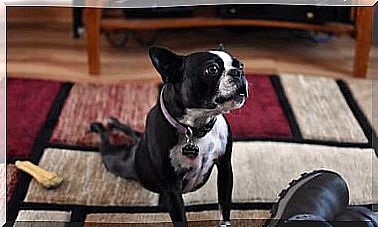Vomiting Episodes In Dogs: Precautions And Treatment

Vomiting for dogs is something very common, but it is important to take a series of measures and precautions so that this condition does not get worse. It may turn out to be nothing, but also the opposite: in any case, it is not something pleasant for your pet, so you must help him to calm this ailment as soon as possible.
In this article we will give you various tips to better assist your dog if he has episodes of vomiting. Don’t miss this information and keep it handy – you never know when you will need it.
Cure for Dog Vomiting
While some episodes of vomiting shouldn’t alarm you, if a reasonable amount of time has already passed (two days maximum) and your dog continues to vomit, the best thing to do is get him to the vet quickly.
In the meantime, however, to make him feel better, try to:

- Do not feed him for at least two hours after the first episode of vomiting. This will allow your digestive system to recover some of its strength.
- Give it a little water at close range. Vomiting causes the animal to become dehydrated, so it will need to drink plenty of water. However, this must be given in small doses, as if you give him a lot, he will end up vomiting again, and you will only make it worse.
- A light diet. If it’s been at least six hours since the last regurgitation, you can give him some food, but something light; in a similar way to how you would do with a child under the same conditions. We recommend a little rice with a little chicken, free of skin, bones and salt.
- Don’t give him medicine. Even if there is someone who recommends some medication, don’t trust it. This is something that must be addressed under the supervision of a veterinarian. Just because it has worked with another dog doesn’t mean it will be successful with yours too. Giving a drug without a veterinary prescription could cause greater harm to your pet.
- Give him his food again. After two days, a period in which the vomiting episodes are supposed to have significantly reduced, you can start again to include his usual food, but as an accompaniment to the light diet recommended previously.
When vomiting in dogs becomes dangerous
There are cases where vomiting can lead to more serious problems for your dog. You have to watch carefully both the animal and its regurgitation. By doing so, you will come to notice issues that require immediate action, such as:

- The discovery of plastic material. If small pieces of plastic appear in the vomit, contact your veterinarian immediately, as they could cause a thrombus or an intestinal infarction, which would cause great problems for your four-legged friend.
- Strong smell. If your dog’s vomit is unpleasant and smells a lot of something chemical, it is possible that your 4-legged friend has ingested a dangerous substance. If so, go to the vet right away.
- Blood. Do not think that if there is blood in the regurgitation it is because the animal had difficulty expelling it, injuring itself in the throat. Blood in vomit is never a good sign.
- Excess of salivation. This symptom, too, can reveal greater damage. Since the animal is almost dehydrated when vomiting, it is not normal for it to excrete a lot of saliva, so take it to the vet without a doubt.
- Regurgitation. If he is constantly trying to regurgitate even though he has nothing to expel, it is best to take him to the vet.
- If he wants to throw up and fails. This can happen when there is gastric obstruction, which can cut off blood flow and develop necrosis.
- If he refuses food and water. If your pet does not accept even a little water, take him quickly to the vet: it is possible that there is something inside his body that you are unaware of.
There are many home steps you can take to avoid vomiting in your dog. However, if you can’t determine the cause, have doubts or notice something unusual, take him to the vet.









